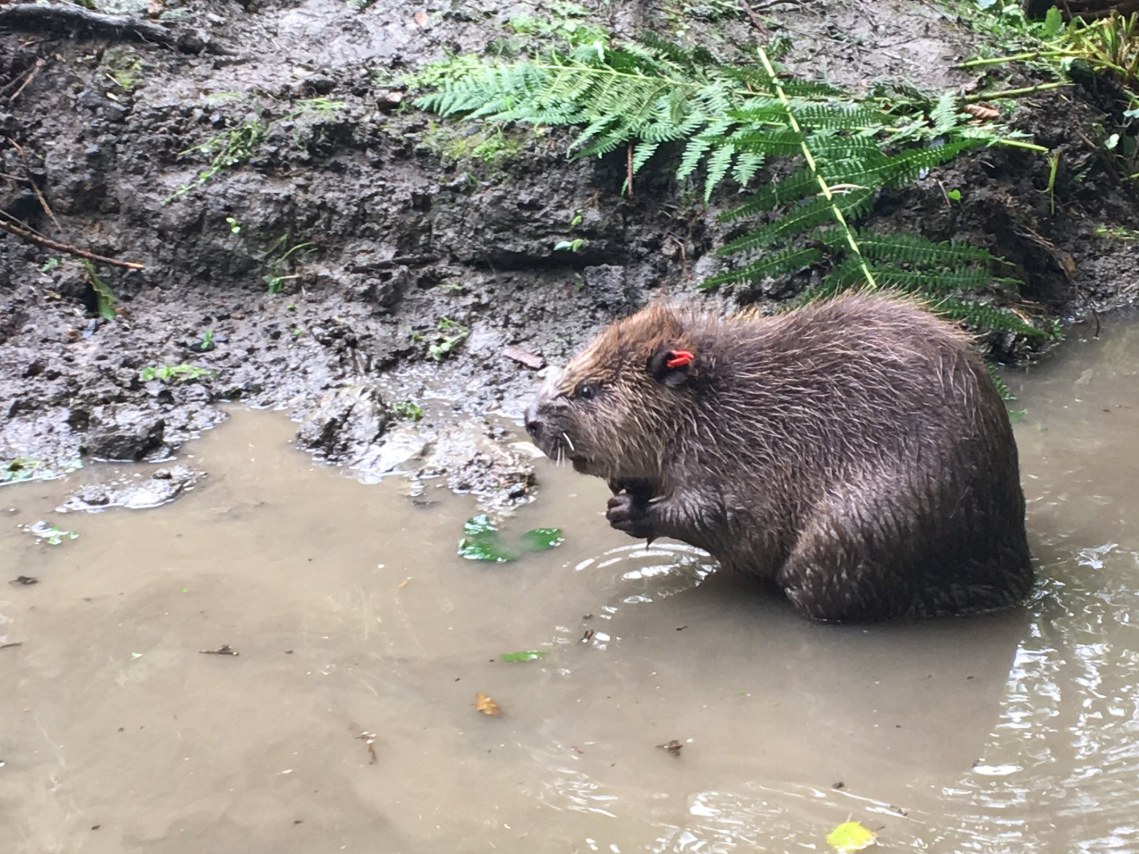Beavers returned to Forest of Dean 400 years after being driven to extinction
Reintroduction expected to increase biodiversity and reduce local flooding

Your support helps us to tell the story
From reproductive rights to climate change to Big Tech, The Independent is on the ground when the story is developing. Whether it's investigating the financials of Elon Musk's pro-Trump PAC or producing our latest documentary, 'The A Word', which shines a light on the American women fighting for reproductive rights, we know how important it is to parse out the facts from the messaging.
At such a critical moment in US history, we need reporters on the ground. Your donation allows us to keep sending journalists to speak to both sides of the story.
The Independent is trusted by Americans across the entire political spectrum. And unlike many other quality news outlets, we choose not to lock Americans out of our reporting and analysis with paywalls. We believe quality journalism should be available to everyone, paid for by those who can afford it.
Your support makes all the difference.Beavers have been reintroduced to the Forest of Dean in Gloucestershire, 400 years after they were driven to extinction in Britain.
It is expected the return of the pair of Eurasian beavers will help spur greater biodiversity in the 16-acre site near Lydbrook, a village in a steep-sided valley above the River Wye.
Beaver dams create ponds, pools and ditches which will form ideal habitats for various species of birds, insects and small mammals.
It is hoped the structures will slow the descent of water through Greathough Brook, which runs through the densely wooded valley and thereby alleviate the risk of flash flooding.
Lydbrook has been subjected to several devastating floods. In 2012 a major flood saw over 4 feet of water inundate the centre of the village, prompting the council to spend £290,000 on new flood defences.
The Forestry Commission unveiled plans for a trial reintroduction of beavers into Greathough Brook in March 2017.
Natural England subsequently granted Forestry Commission officials a licence to release the semi-aquatic animals into the secure site.
The site will be closely monitored, and will “inform future reintroductions”, the Department for Environment Food and Rural Affairs said in a statement.
Environment secretary, Michael Gove, who attended the release of the animals said: “The beaver has a special place in English heritage and the Forest of Dean. This release is a fantastic opportunity to develop our understanding of the potential impacts of reintroductions and help this iconic species, 400 years after it was driven to extinction. The community of Lydbrook has shown tremendous support for this scheme and the beavers will be a welcome addition to local wildlife.
“The project is an example of our wider approach to enhancing biodiversity. It is another step towards our aim of leaving the environment in a better state for future generations.”
Mr Gove’s visit was not widely publicised amid concerns crowds could disturb the beavers or attempt to release them into a wider area, but also because of local opposition to the government’s controversial wild boar and badger culls which are in effect in the area.
Mr Gove met those involved with the release at Speech House – Charles II hunting lodge – and they were bussed down to the site.
The Forestry Commission’s Kevin Stannard said: “Today’s release of beavers is a momentous occasion for the Forest of Dean. We are looking forward to seeing the ecological and hydrological benefits the beavers will bring to the Greathough Brook.”
Beavers are described as “keystone species” – due to their role in wetland ecology and the creation of ecosystems providing habitats for other species.
“Few other animals, aside from humans, have the ability to so drastically modify and shape their surrounding environment. For this reason beavers are often referred to as ‘ecosystem engineers’,” a spokesman for the Department for Environment, Food and Rural Affairs (Defra) said.
Previous studies in the US have shown that 75 times as many waterbirds live in watercourses inhabited by beavers, than in those without the animals, while the total abundance of creatures living in beaver-created ponds may be between two and five times greater by weight.
In the UK, hydrologists from the University of Exeter have undertaken research into the impacts of beaver reintroduction at a number of sites.
Professor Richard Brazier, a hydrologist from the University of Exeter said: “We have monitored the hydrology of the Greathough Brook for over a year now and shown quite clearly that the brook contributes to the flooding problems experienced in the village of Lydbrook.
“We now have a unique opportunity to study the impacts of beaver dams on the flood flows from this flashy and flood prone landscape. The study will be a valuable and important opportunity to quantify the benefits that beaver dams might deliver and therefore contribute to natural flood management in an upland, wooded catchment.”
Rebecca Wilson, the head of planning and environment for the Forestry Commission in west England, said: “Beavers are natural habitat engineers, restoring complex wetland habitats and providing habitat for declining species whilst slowing the flow of water downstream. We are delighted to welcome beavers to the Forest of Dean and are keen to observe the many benefits they will bring to both local communities and the wider Forest of Dean environment.”
Join our commenting forum
Join thought-provoking conversations, follow other Independent readers and see their replies
Comments